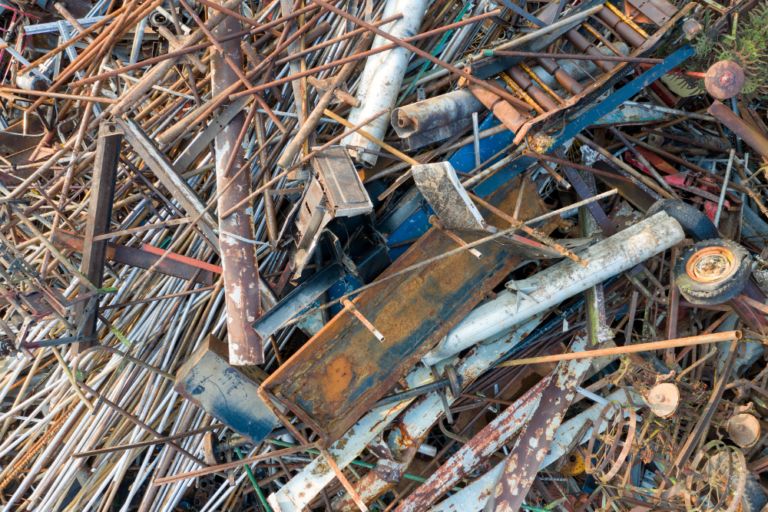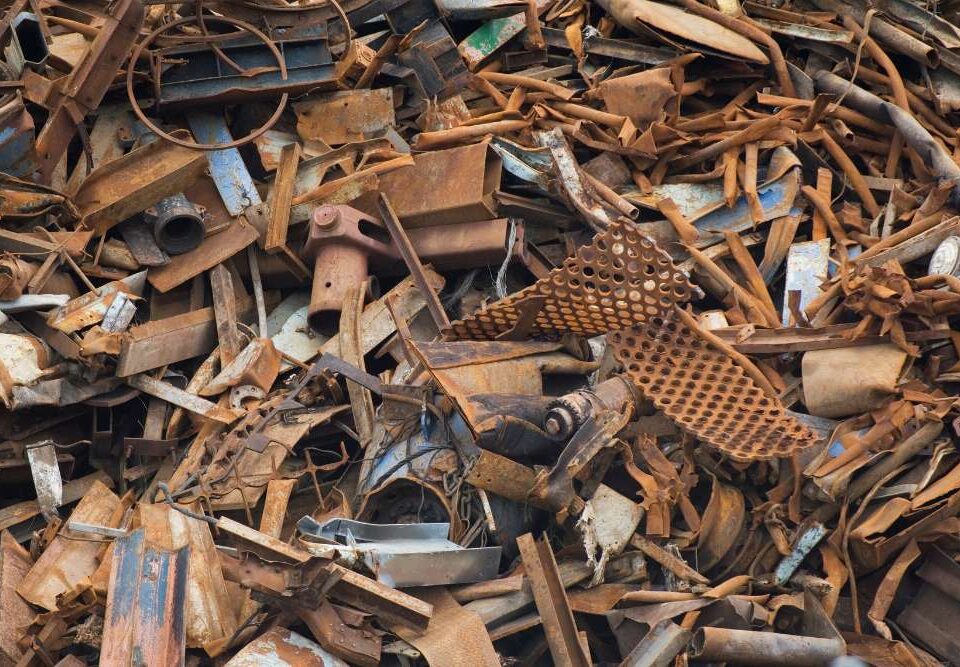
How to Handle a Large-Scale Foreclosure Cleanout
August 12, 2025
How to Ensure Safe Yard Waste Disposal
August 13, 2025How to Manage Junk After a Big Family Move
Sorting Through the Chaos of a Family Move
After a major family move, the sight of scattered boxes and forgotten items can be overwhelming. It is common to feel a mix of excitement and stress as every corner of your new home reveals something left behind or misplaced. Taking a methodical approach helps ease this tension. Start by designating areas for items to keep, donate, recycle, or discard. This initial organization not only clears space quickly but also prevents future frustration when searching for essentials. Families can involve everyone in the process, assigning age-appropriate tasks that keep children engaged while ensuring that nothing important is accidentally tossed. Attention to detail at this stage pays off when setting up functional living areas.
Beyond sorting, consider the psychological impact of letting go. Moving often brings a flood of memories, making certain objects harder to part with. A compassionate approach involves taking your time with sentimental items while being realistic about what fits in your new environment. Using labeled containers and checklists can streamline this effort and reduce stress. Integrating these habits early establishes a smoother transition and makes the home feel welcoming sooner.
Creating a Staging Area for Junk
Establishing a temporary staging area in your garage, backyard, or spare room can be crucial after a move. This space allows you to consolidate unwanted items before deciding on their final destination. By keeping clutter centralized, your family can move through the new home more freely, reducing accidents and preventing furniture from being blocked by piles of boxes. It is also helpful to separate hazardous materials or electronics that require specialized disposal. Having a staging area provides a clear visual of what must be managed, making future disposal trips more efficient.
In addition, a staging area encourages a structured routine for junk removal. Families can schedule time to handle specific categories, such as old appliances, clothing, or toys, and track what has been processed. This systematic approach avoids leaving unwanted items scattered for weeks, which can impede the home setup. Consistent review of the staging area also helps identify reusable or sellable items, allowing for environmentally conscious decisions. With a designated space, even a large influx of unwanted items can be managed without overwhelming the household.

Efficient Disposal of Large Items
Handling large items like sofas, mattresses, or appliances requires planning and proper equipment. Attempting to move them without assistance can cause damage to the home or injuries to family members. Renting dollies, using lifting straps, and coordinating with neighbors or friends provides safety and efficiency. If available, specialized moving services or junk removal companies can take these items off your hands, saving time and effort. Such options reduce physical strain and ensure that the disposal process aligns with local regulations regarding bulk waste.
It is also important to determine whether items are suitable for donation or recycling before discarding. Many community centers and thrift stores accept gently used furniture, appliances, and electronics. Recycling facilities may take metals, plastics, and other components, preventing unnecessary landfill contributions. Considering these alternatives not only benefits the environment but also creates opportunities to help others in need. Proper disposal practices turn the post-move clutter into a responsible, organized, and safe outcome for your household.
Integrating Donation and Recycling Opportunities
After a move, some belongings may no longer serve your family but are still functional. Rather than discarding, exploring donation and recycling options can provide both practical and emotional satisfaction. Local charities, shelters, and nonprofit organizations often welcome clothing, toys, and household items, offering an alternative to landfill disposal. Sorting items by condition and usability makes the donation process faster and more meaningful. Families can even involve children in selecting which toys or clothes to give, teaching lessons in generosity and responsibility.
Recycling offers another layer of eco-conscious disposal. Electronics, batteries, and certain household materials require proper handling to prevent environmental harm. Researching community recycling programs ensures that these items are processed correctly. Maintaining a list of recycling locations and accepted materials makes ongoing waste management easier, preventing overlooked items from accumulating. Integrating donations and recycling into your post-move routine provides a sense of accomplishment while contributing positively to the community and the environment.
Streamlining Paperwork and Small Items
Small items like paperwork, stationery, and miscellaneous household accessories often create unexpected clutter after a move. Without proper attention, these items can quickly overwhelm counters and drawers. Establishing a filing system for important documents and shredding outdated papers reduces stress and protects sensitive information. Using labeled containers for smaller household items prevents them from being lost in the shuffle and speeds up unpacking. A focused approach to tiny details ensures that your new home remains organized from the outset.
Additionally, digital solutions can complement physical organization. Scanning important documents and storing them in cloud systems allows for easy retrieval and reduces the physical storage burden. Regular review and purging of unnecessary papers, manuals, or magazines keep spaces clutter-free. For small everyday items, designating specific storage spots in drawers or baskets prevents recurring messes. By addressing paperwork and minor belongings early, the household can maintain a smooth transition and enjoy a more functional and visually appealing home environment.
Scheduling Professional Junk Removal Services
Engaging professional junk removal services can simplify post-move cleanup immensely. These services provide trained personnel, appropriate tools, and transportation for large or cumbersome items. Scheduling pickups at convenient times ensures that your home remains accessible while expediting the removal process. Professionals also navigate local regulations regarding bulk waste, which can be confusing and time-consuming for homeowners. Outsourcing these tasks allows families to focus on settling into their new space rather than managing the logistics of disposal.
Professional services also bring added flexibility for special circumstances. Some companies offer same-day or emergency pickup, while others provide eco-friendly disposal and recycling solutions. Families can choose options tailored to their needs and budget, ensuring efficiency without sacrificing environmental responsibility. Partnering with experts reduces the risk of injury, damage, and unnecessary stress. Overall, using professional junk removal enhances the post-move experience, turning a chaotic transition into a streamlined and manageable process.
Implementing a Donation Rotation System
Creating a donation rotation system can help families continually manage excess items after moving. Instead of waiting for a large accumulation, regularly setting aside items for donation keeps clutter under control. Designating a bin or corner in the staging area for items destined for charity ensures that contributions are consistent and organized. This method also encourages family members to make mindful decisions about possessions, promoting sustainable habits and lessening emotional attachment to unnecessary belongings.
A rotation system can be paired with community programs or scheduled donation drop-offs. Families can maintain a calendar for pickups or trips to local organizations, preventing items from lingering indefinitely. This approach makes donation a habitual part of household management rather than an occasional, overwhelming event. By embedding these practices into everyday routines, your home can stay orderly and environmentally responsible, reinforcing positive habits for years to come.
Utilizing Local Recycling Programs
Many municipalities offer specialized recycling programs for materials that cannot be discarded with regular trash. Engaging with these programs ensures proper handling of items like electronics, batteries, and certain plastics. Researching local guidelines and scheduled collection days allows for timely participation and avoids fines or improper disposal. Families benefit from understanding what can be recycled, how to prepare items, and where to take them. Integrating local recycling into the move process reduces clutter and promotes environmental stewardship.
Local programs often provide educational resources and community support for recycling initiatives. By involving children in recycling tasks, families instill early awareness of environmental responsibility. Additionally, these programs can handle bulk items or hazardous materials that might otherwise create challenges. Coordinating pickups and drop-offs with local services ensures efficiency while minimizing risk. Utilizing municipal recycling efforts complements donation strategies, resulting in a more comprehensive approach to junk management after a major family move.
Keeping Sentimental Items Organized
Sentimental items often pose the greatest challenge after a move. Boxes of photographs, heirlooms, or memorabilia can create emotional stress if not managed properly. Creating designated areas or labeled containers for sentimental belongings allows for organized storage without overwhelming living spaces. Families can prioritize accessibility for frequently enjoyed items while securely storing others. Proper handling reduces anxiety and makes unpacking a more joyful experience.
In addition, consider digital archiving for sentimental items when possible. Scanning photos or documents, and storing digital versions, preserves memories while freeing physical space. Rotating displays of special items can keep memories alive without cluttering the home. Establishing this balance between preservation and organization supports a smoother post-move transition and encourages mindful engagement with cherished possessions. This thoughtful approach helps families enjoy their new environment while maintaining connections to meaningful past experiences.
Maintaining Ongoing Clutter Control
After a big move, initial organization is only the beginning. Maintaining a regular schedule for reviewing, sorting, and discarding items prevents clutter from accumulating again. Families can set aside weekly or monthly times to assess what is still needed and what can be donated, recycled, or disposed of. Creating habits around clutter control ensures that living spaces remain functional and comfortable. Over time, this reduces stress and enhances the enjoyment of the home.
Ongoing clutter control also involves creating designated storage zones and clear labeling for frequently used items. By keeping everyday items in logical locations, families streamline daily routines and prevent unnecessary messes. Involving all household members in maintaining these practices fosters a shared responsibility for order. With consistent attention and proactive management, your home can remain organized, safe, and welcoming, supporting a positive and productive family environment well beyond the initial move.
Conclusion
Managing junk after a large family move requires planning, organization, and practical strategies. From sorting through scattered boxes to designating staging areas and utilizing local recycling programs, each step contributes to a smoother transition and a more comfortable home environment. Professional junk removal services can greatly reduce physical strain while ensuring responsible disposal, making the process more efficient and less stressful. Consistent attention to small items and sentimental belongings prevents future clutter, promoting long-term order. Families benefit from creating habits around donation, recycling, and organized storage, which not only clears space but also fosters mindful living.
For residents in Santa Rosa, CA seeking reliable and comprehensive junk removal, North Bay Junk Removal provides professional assistance tailored to your needs. Their team handles everything from large appliances to miscellaneous household items, ensuring safe and responsible disposal. Contact North Bay Junk Removal at 707-478-6817 to schedule service and reclaim your home from post-move clutter with ease and peace of mind.




